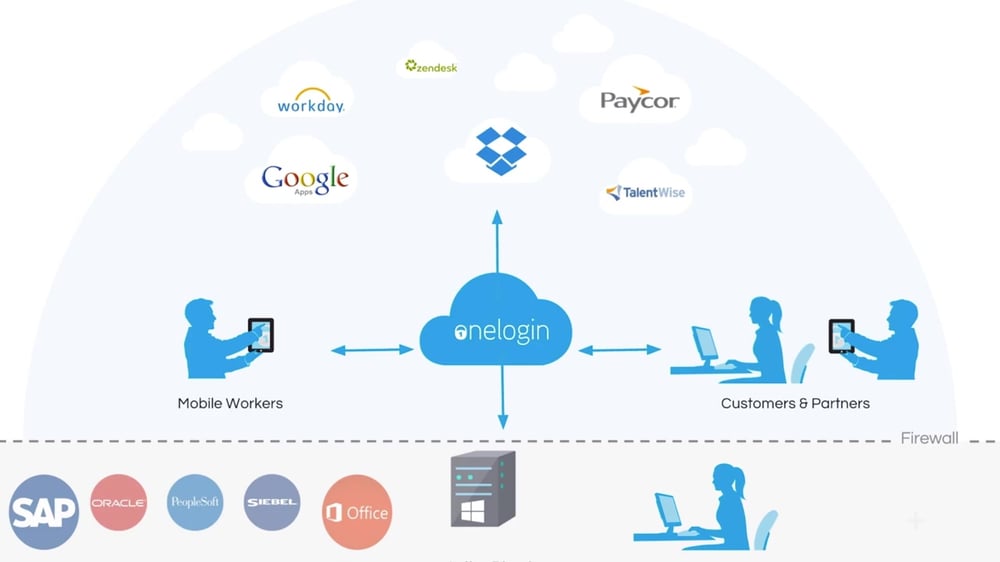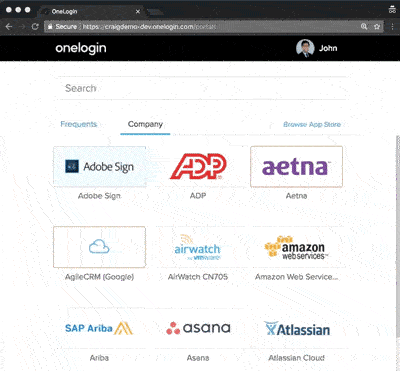
Simplify How Your Team Accesses your Apps with Security in Mind
What is an Identity Access Management Tool?
Identity & Access Management (IAM) is the security discipline that enables the right individuals to access the right resources at the right times for the right reasons. Another way to look at it is IAM is a tool that lets you securely log into the business applications you use for work in a portal that removes the need to memorize multiple different usernames and passwords. It simplifies the experience for your team to access the tools they need to use in order to get their work done while making it just as easy for your IT administrators to manage.
Is this different from a Password Manager tool?
“The whole thing is about managing access.”
Imagine if your entire marketing team needs access to a single Facebook page. Do you want the entire team to have the same password? Or would you prefer to have access to that page managed and monitored through a portal without actually sharing the password? From the marketer's perspective, they just click on the Facebook icon in their portal. Whereas from the admin’s perspective, who is accessing the page can be monitored and managed. In the case of OneLogin, password management is built in. The tool offers access to your business applications in a centrally managed portal. However, this is not similar to non-enterprise versions of familiar tools such as LastPass or Dashlane. (To note: LastPass and Dashlane do offer enterprise/professional versions. Cloudwards ran a great comparison article: Here’s the link.)
Why did we select OneLogin over other tools?
We like the way OneLogin approaches their client base. In particular, they have created a simple, straightforward, secure, and elegant solution.

The tool is easy to use while managing an otherwise complex problem.
What is single sign on?
It’s exactly what it sounds like. You have one username and password to access a portal that connects you to all of your tools. Once logged in, all you have to do is click on your mail, CRM, or corporate application. From there, OneLogin takes the reins and connects you. No more multiple emails or passwords bogging you down.
Why is single sign on preferred over a single user experience?
If you’re managing your personal accounts, a single user experience is perfect. The single sign on experience is highly recommended for businesses. This is especially true for onboarding and offboarding employees. With a single identity manager in place, admins can add one new account for a user and then select the roles or applications they should and need to have access to.
What if a staff member bypasses the portal entirely and tries to login to, say, Salesforce?
This is a great question because the answer is simple: The staff member won’t have access to Salesforce without the portal.
80% of Global Businesses Can Expect a Critical Breach in the Next Year
Trend Micro published an article in August 2021 declaring that 80% of global organizations can expect a breach of customer records. They surveyed over 3,600 businesses. In particular, they highlighted the importance of “going back to basics, identifying the critical data most at risk, focusing on the threats that matter most to their business, and delivering multi-layered protection from comprehensive, connected platforms."
Does OneLogin help with this?
It sure does. OneLogin can assist with any mobile experience (e.g. laptop, tablet, phone) through the various mobile applications and ability to log in through a web browser. Further, you can integrate with RADIUS or your VPN.
What has restored our confidence in OneLogin following the 2017 breach?
What really impressed us is how they implemented several improvements to harden their security. Further, they retooled internally by focusing on hiring experts in the security industry. Lastly, they looked in the mirror and spent a great deal of time strengthening their own internal processes. We’re impressed they didn’t see it as just a product problem, but also as a people (of all roles) and process problem which helped reshape who they are and how they approach the market.
Don't Fall Behind!
Get the latest work-from-home and Humans First® IT tips straight to your inbox.